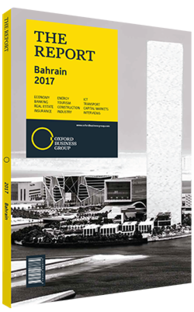Bahrain expands mass transit options
A new light rail service could help travellers avoid heavy traffic and turn the journey from Bahrain’s new airport to The Avenues shopping centre into a stress-free shuttle ride. Transport planners are going back to the drawing board to breathe new life into a mass transit proposal for 2020 that was first tabled in 2010.
RAIL REVISITED: The Ministry of Transport and Telecommunications (MTT) announced in March 2016 that the kingdom was considering a 105-km, four-line network, with the first phase covering 25 km and capable of carrying 8000-10,000 passengers per hour in each direction. As far back as October 2015, Mariam Jumaan, undersecretary for Land Transportation and Posts at the MTT, had told delegates at the MENA Rail and Metro Summit that the ministry was looking for consultants for the project.
An MTT team working on the project had commissioned a new feasibility study in the autumn of 2016 and has announced that it would report its findings in early 2017. “We anticipate that in its first phase the light rail network will connect from the airport to the Bahrain Financial Harbour and the Diplomatic Area, in the centre of Manama, and to the malls and residential areas of Seef,” Nada Yousif Deen, director of land transportation projects at the MTT, told OBG.
INTEGRATION: The study will also examine the best way to integrate the light rail system onto the road network using elevated sections in busy urban areas and creating transfer stations that integrate with existing hubs such as the airport and bus stations. The blueprint for the first phase includes 17 stations that connect the main business and residential areas. Planners will also have to consider how the light rail network will connect with wider plans for a 2177-km GCC rail network. It is unlikely the rail gauge or rolling stock will be compatible, but shared terminals may be constructed.
Transport ministers across the GCC have acknowledged that the original 2018 completion date for the pan-regional railway is now infeasible and that construction of some sections will be delayed as austerity measures many Gulf states mean financing will be decided on a project-by-project basis. Gulf News reported in September 2016 Abdullah Belhaif Al Nuami, the UAE’s minister of infrastructure development, said at a press conference that the earliest completion date for the network would be 2021.
EASING CONGESTION: The government of Bahrain has recognised for some time that solutions need to be found to ease congestion and the flow of traffic on the country’s roads. Data collated by several government ministries paints a stark picture of the pressure placed on the kingdom’s road networks by growing numbers of vehicles and drivers. According to figures from the Information and eGovernment Authority, from 2004 to 2015 the number of registered vehicles increased by 104% from 293,801 to 599,432, and the number of registered drivers shot up by over 140% from 24,224 to 58,296. While it is true that the road network has expanded at the same time, it has not kept pace with vehicle growth. The total length of roads grew by just 9.8% from 3708 km in 2005 to 4072 km in 2015.
ECONOMIC VISION 2030: In 2008 Bahrain first published its Economic Vision 2030 in which it outlined a master plan that would guide the transformation of the country from a “regional pioneer to a global contender,” and a central pillar of this is to ensure the kingdom has cutting-edge infrastructure. In the National Development Strategy (NDS) for 2015-18, these goals were revisited and the role high-quality infrastructure and public transport were classified as National Strategic Priority 5. The NDS also outlined its immediate plans to improve the public bus network and committed to ensuring that options for mass transit were subject to close scrutiny. The NDS document stated, “Furthermore, the government will conduct a feasibility study to introduce advanced modes of transportation such as tram, monorail and light rail.” Announcements from the MTT in 2016 suggest this commitment is on track.
You have reached the limit of premium articles you can view for free.
Choose from the options below to purchase print or digital editions of our Reports. You can also purchase a website subscription giving you unlimited access to all of our Reports online for 12 months.
If you have already purchased this Report or have a website subscription, please login to continue.

